
It was hard finding things to watch in the early days of the pandemic. Actually, let me rephrase that: it was hard finding only one thing to watch in the early days of the pandemic. The options were overwhelming (but can I interest you in our streaming guides?). “I guess I’ll spend the next week not leaving my apartment and finally getting around to The Sopranos. Or should I start Gilmore Girls? I’ve heard good things about Deadwood. Then again, I have been meaning to do a James Bond marathon before No Time to Die comes out, which is definitely going to happen in 2020.” (Oops.)
Instead of wasting an hour every night looking for something to watch on Netflix before settling on a mediocre movie that I was going to half pay attention to anyway, I decided to give myself an assignment: watch every Best Picture winner ever. It’s the only worthwhile thing I accomplished during the pandemic. Sorry, Great American Novel. You’ll have to wait until the next pandemic. Ahead of Sunday’s 93rd Academy Awards (nominees here), here are my picks for the 50 best Best Picture winners.
50. The Last Emperor
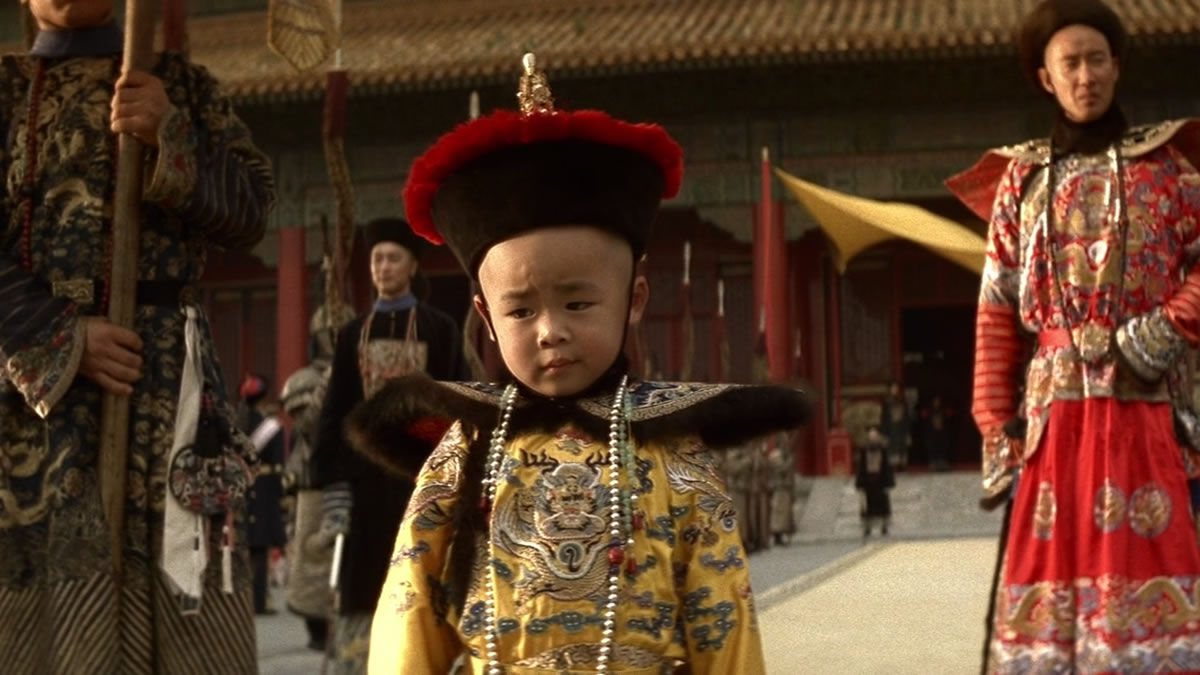
When people say “they don’t make movies like this anymore,” they’re not directly referring to The Last Emperor, but movies like The Last Emperor. It’s an audacious, decades-spanning drama that isn’t based on a comic book or board game; it would be an eight-part Netflix series if made today. Or not made at all. That would be a shame.
49. The Shape of Water
As much as I love complaining about the Oscars (it’s therapeutic), the Academy did a decent job picking Best Picture winners during the 2010s. Not great, but decent. Moonlight and Parasite are classics, while The Hurt Locker and 12 Years a Slave have held up well (we’ll get to all four soon enough). On the flip side, Green Book is a nightmare and The King’s Speech winning over The Social Network is a #StopTheSteal that I can get behind. Where does that leave The Shape of Water?
On one hand, it beat Dunkirk, Get Out, Lady Bird, and Phantom Thread, all of which are better films; on the other, it’s a romantic-horror movie about Sally Hawkins falling in love with a fish-man, with supporting roles from Michael Stuhlbarg, Octavia Spencer, Richard Jenkins, and Michael Shannon as the villain. I want to love The Shape of Water for the plot, for the cast, for Guillermo del Toro actually finishing a movie, but I wish he leaned further into B-movie shlock. The fact that he didn’t is probably why it won Best Picture.
48. An American in Paris
Jerry Mulligan, the American painter in Paris, is not a likable guy. He becomes obsessed with a 19-year-old perfume store employee during a date with another woman. After the literal teenager declines his invitation to go on a date with him, he calls her at work the next day, and even though she again tells him to leave her alone, he goes down to the perfume store and won’t leave her alone until she gives in. It’s the kind of problematic 1950s “love story” that wouldn’t fly today, and with good reason: it’s weird!
For those first 95 minutes and change of An American in Paris, there’s no reason why we should want Gene Kelly’s Jerry and Leslie Caron’s Lise to end up together, outside of them both being beautiful and magnificent dancers. But then comes the dialogue-free 17-minute ballet that ends the film, set to George Gershwin’s “An American in Paris,” and it begins to make sense. It’s a Technicolor tour of Paris that cost nearly $500,000 to film, with Kelly and Caron, along with hundreds of extras, doing more with their silent bodies than words ever could. It’s an emotional journey and an incredible sequence, and the reason An American in Paris won Best Picture. Save the best (picture) for the end.
47. West Side Story
I don’t necessarily agree with all of Pauline Kael’s review of West Side Story, but it’s too good to not share. She compared the musical to Romeo and Juliet, minus “all that cumbersome poetry,” and guessed that “in a few decades,” the choreography will look “like hilariously limited, dated period pieces.” Kael wasn’t done: West Side Story is “frenzied hokum” with “painfully old-fashioned and mawkish” dialogue. She also went after Natalie Wood (Maria), calling her “so perfectly banal she destroys all thoughts of love.” Ouch. At least she didn’t single out Rita Moreno (Anita), who gives the best performance in the movie (Richard Beymer is, let’s face it, a total snooze as Tony).
Kael made a lot of valid criticisms (she usually did), but I also understand why West Side Story is considered a classic. It’s dazzling to look at and the humid energy is palpable. The songs will also be stuck in your head for a week — or in my case, as someone whose last name sounds like “Krupke,” my entire life. Maybe that’s the key to loving West Side Story: watch it once in full; watch it again, but only the musical numbers. It’s a better experience.
46. The Sound of Music
The Sound of Music is supremely corny, maybe the corniest movie (even if it’s ostensibly a movie about fleeing from the Nazis). It would be easy to mock if it didn’t all work: the songs (Rodgers and Hammerstein didn’t have to go so hard on “So Long, Farewell,” “Sixteen Going on Seventeen,” and “My Favorite Things,” but they did that… for us), the cast (Julie Andrews is a treasure and Christopher Plummer is confirmed antifa), the the iconic cinematography, the nuns f*cking up the Nazis’ cars, the kids’ introductions (I’m partial to “I’m Friedrich, I’m 14, I’m impossible”). The Sound of Music is the sixth highest-grossing movie of all-time for a reason: it’s an undeniably charming crowd-pleaser.
45. Gone with the Wind
I’m no coward. I’ll say what others are too scared to: Melanie deserved better.
44. Wings
Wings was the first movie to win Best Picture, back when the category was called “Outstanding Picture” and there were only two other nominees, The Racket and 7th Heaven. The silent film holds up remarkably well. There’s little of the stuffiness that you might expect from a nearly-100-year-old movie. There’s a timeless plot (two men fighting for the affections of the same woman, while a girl-next-door pines for one of the dudes who doesn’t deserve her); brief nudity; and air-combat sequences that boggle the mind if you consider when they were shot. If you ever find yourself saying, “Gee, I want to watch a movie from the 1920s,” for some reason, you could do a whole lot worse than Wings.
43. Unforgiven
If Clint Eastwood isn’t the most successful actor-turned-director ever, he’s at least in consideration. He made his directorial debut in 1971 with Play Misty with Me (starring Jessica Walter!); since then, he’s been behind the camera for numerous Best Picture contenders, beginning with Unforgiven and followed by Mystic River, Million Dollar Baby, Letters from Iwo Jima, American Sniper, and Sully, which wasn’t actually nominated for Best Picture but I’m pretending it was (Sully rules). Of those films, Unforgiven, which works as both a deconstruction of and tribute to the heroic myths of the Wild West, feels the most personal to Eastwood.
He rose to fame as the Man with No Name in Sergio Leone’s “Spaghetti Western” trilogy and remains the living avatar for the Hollywood cowboy. Eastwood could have kept churning out Westerns following the box office and critical success of Unforgiven, but as he said back in 2017, “When I read the script 25 years ago, I always thought that this would be a good last Western for me to do. And it was the last Western, because I have never read one that worked as well as this one since that.” Thankfully, it wasn’t his last film or even his last Best Picture winner. We’ll get there.
42. Midnight Cowboy
Midnight Cowboy is the only X-rated movie to win Best Picture. Other movies to receive an X rating from the Motion Picture Association include A Clockwork Orange, Henry: Portrait of a Serial Killer, The Hills Have Eyes, Klute (for which Jane Fonda won Best Actress), and The Evil Dead (for which Sam Raimi should have won an Oscar).
Midnight Cowboy — an admirably seedy movie with a bleak ending and strong chemistry between Jon Voight as naive Texan Joe Buck and Dustin Hoffman as slimy New Yorker “Ratso” Rizzo — will also be the last X-rated movie to win Best Picture, as the X rating no longer exists; it was replaced by NC-17. No NC-17 movie has won Best Picture (yet), but Blue Valentine came close: it was initially rated NC-17 before a last-minute appeal to bring it down to R. Michelle Williams was later nominated for Best Actress.
Thus concludes a brief history of X and NC-17 movies being nominated for Oscars (unless we go back in time and give Paul Verhoeven a well-deserved Best Director nomination for Showgirls).
41. Mrs. Miniver
I was, I’ll admit, prepared to not like this movie. I certainly did not like Vin, a would-be lax bro in the 2020s. But I was otherwise wrong: Mrs. Miniver is a moving exploration of a family living (and dying) through World War II. The Dunkirk sequence is a stunner, while the German pilot entering the Miniver’s home made me a Greer Garson fan. She gives a stoic performance (women were rarely given the opportunity to be stoic in the early days of the Oscars) in a touching film about perseverance. The final sermon is a bit much, though.
40. Mutiny on the Bounty
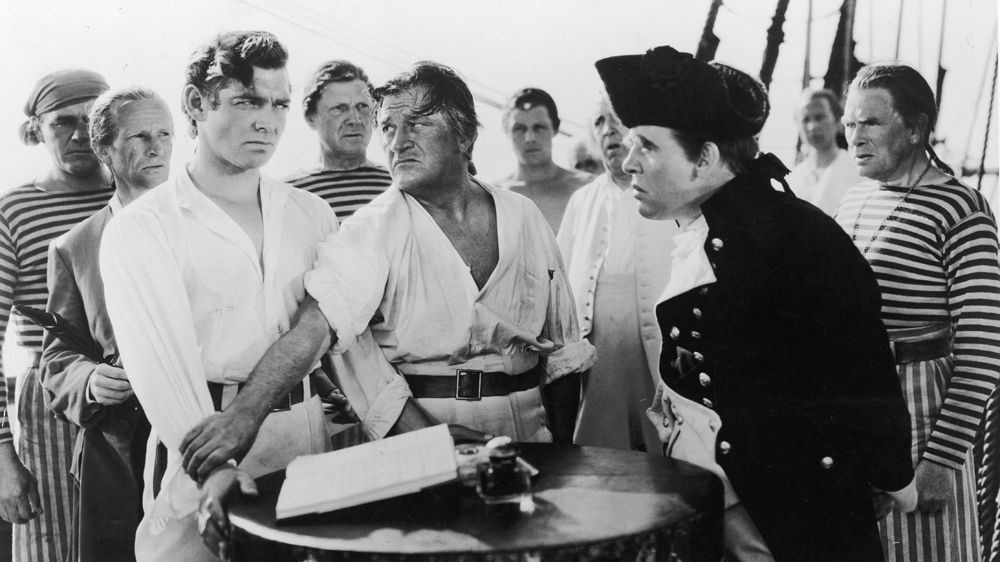
Clark Gable is one of only three actors, along with Walter Pidgeon and Russell Crowe, to play the lead role in back-to-back Best Picture winners: 1934’s It Happened One Night and 1935’s Mutiny on the Bounty. Both films were also box office hits, although not as massive as Gable’s third and final Best Picture winner, Gone with the Wind, which remains the highest-grossing movie ever when adjusted for inflation. He also looked really good as a sailor. Gable seemingly had it all, but he was not “the greatest film actor who came from that period of time.” That, according to Daniel Day-Lewis (a three-time Oscar winner who appeared in one Best Picture winner, Gandhi), was Gable’s Mutiny co-star, Charles Laughton, who played the HMS Bounty’s cruel-but-effective captain with haughty intensity. He’s a villain you love to hate, a character type that Laughton would later explore in the only film he ever directed: the horror classic The Night of the Hunter.
39. From Here to Eternity
The beach kiss in From Here to Eternity frequently pops up on lists like The Most Romantic Movie Scenes Ever (it ranks #20 on AFI’s 100 Years…100 Passions, whatever that means), but people tend to forget what comes after the lusty roll in the sand. First off, Warden and Karen (Burt Lancaster and Deborah Kerr) are having an affair, and following the salty smooch, he gets mad at her for kissing other men. Cool guy. Then comes the Michelle Williams in Manchester by the Sea-level depressing monologue.
Karen tells Warden about how her husband (and his commanding officer in the Army) was out “with the hatcheck girl in one of the nightclubs” the night she went into labor, one month early. “He was only a little drunk when he came in… at five a.m,” she says. “He looked alarmed when he saw me. I guess it was because of my screams. I was lying there on the floor… Of course, the baby was dead. It was a boy. But they worked over me at the hospital and fixed me up fine. They even took my appendix out, too. They threw that in free. It was all fine.” Good lord. Sgt. Fatso Judson torturing Frank Sinatra — hell, even the climatic attack on Pearl Harbor — is comedic relief compared to that. From Here to Eternity is a good Best Picture winner, but it’s a great melodrama.
38. Rebecca
Here’s a tough question for the next time you host a trivia night with friends: “What is the only Alfred Hitchcock movie to win Best Picture?” It’s not Vertigo, or North by Northwest, or Psycho, or Rear Window, or the movie about birds that I can’t remember the title of. It’s Rebecca, Hitchcock’s first American studio movie. Based on Daphne du Maurier’s book of the same name, the gothic film is part romance and part mystery about a young woman, an older man who isn’t over his deceased first wife, and an obsessive housekeeper, Mrs. Danvers, one of the more complex characters in any Best Picture winner. If you want to watch Rebecca, which you absolutely should, make sure you watch Rebecca (1940), not the dreadful Rebecca (2020).
37. In the Heat of the Night
The four Best Picture winners before In the Heat of the Night were Tom Jones, My Fair Lady, The Sound of Music, and A Man for All Seasons. Those aren’t all bad movies, but they are four very European movies that said nothing about the counterculture movement of the 1960s. In the Heat of the Night, a sweaty thriller about a Black police officer who they call Mister Tibbs investigating a murder in deeply racist Mississippi that’s more about the relationship between the big-city detective (Sidney Poitier) and small-town police chief (Rod Steiger) than the sluggish case itself, was the beginning of a new era of socially conscious movies in Hollywood.
36. My Fair Lady
Audrey Hepburn was one of Hollywood’s most restrained actresses. But not in My Fair Lady. That’s what makes the pre-intermission portion of the musical so fun. As Cockney flower girl Eliza Doolittle, she’s all guttural noises (“garn”) and house-rattling howls. Hepburn is clearly having a blast, even if her singing voice was dubbed by Marni Nixon. But after working with (harassed by) phonetician Henry Higgins (Rex Harrison) for six months, Eliza is transformed into a “proper lady,” someone who even Higgins’ rival thinks is royalty. My Fair Lady becomes less interesting when her charming eccentricities are smoothed out, which is a shame. There’s a lot to examine in Eliza returning to her old lifestyle, only to discover that she no longer fits in among the other “common and ignorant” girls. It could be heartbreaking, but it isn’t, because My Fair Lady doesn’t always care about Eliza. It’s too smitten with Higgins, a loathsome buffoon who takes the credit for Eliza’s linguistic transformation. Harrison is fantastic and My Fair Lady is a blast, but wouldn’t it be loverly if it had 80 percent less misogynistic monologues?
35. The Lost Weekend
Don Birnam is a writer, a brother, and a handsome lover, but mostly, he’s a drunk. He stumbles around New York City in constant need of a fill-up to quench his unquenchable thirst. He steals purses, he pawns his typewriter, he chooses a night at the bar with a fed-up bartender over a relaxing weekend away with his brother. At times, Billy Wilder’s The Lost Weekend is clunky — the theremin-heavy score belongs in a different film, and our understanding of addiction has improved since the 1940s — but it’s an alarmingly grim (and in the scene with the bat and the mouse, horrifying) look at an alcoholic.
The Lost Weekend is one of only three films to win both Best Picture at the Oscars and Grand Prix at the Cannes Film Festival (the others are Marty and Parasite). To call it the weakest of the three isn’t an insult. The Lost Weekend is “merely” very good, while the other two are masterpieces.
34. Amadeus
Real life can be boring — that’s why we watch movies. Movies (ideally) cut out the tedious stuff and leave only the interesting parts. Amadeus is “laughably” wrong, historian Alex von Tunzelmann wrote for the Guardian, with “a deadly rivalry that never was, a dried-up bachelor who was actually a father of eight, and flops that were hits in reality.” Extremely Tommy Lee Jones in The Fugitive voice: “I don’t care.”
I don’t care if Salieri never spied on Mozart while the composer was devilishly nibbling on a woman’s breast before making her say “eat my sh*t” backwards; or if Mozart never played the piano upside down at a hedonistic party (actually, he probably did this); or if Salieri, seething with jealous admiration at his rival’s prodigal brilliance, never collaborated with Mozart while the latter was on his deathbed. Amadeus is lively and thumbs its nose at stuffy, more traditional biopics. It’s only the interesting parts. Historical accuracy is overrated anyway. I bet they didn’t even have movie cameras in the 1800s.
33. Chicago
If it wasn’t for Cats, Chicago may not have won Best Picture. Let me explain.
Years before making the acclaimed adaptation of the vigorous Jazz Age-set musical, director Rob Marshall was an actor who played Munkustrap in the Broadway production of Cats. “I was more of a dancer than most of the people who played that part,” he told the New Yorker, “so the choreographer actually added all this new dancing for me. I think that might have led to the fact that I got a herniated disk.” After recovering from the injury, Marshall became a full-time choreographer and, later, a director.
Someone was going to turn the intertwined stories of Roxie Hart and Velma Kelly into a movie, and I’m glad it was Marshall (even if his other theater adaptations, like Nine and Into the Woods, haven’t been as successful). His Chicago is sexy and sleazy (how it should be) and he has a keen eye for staging. His years in the theater are evident during the electric “Cell Block Tango” sequence (the casting, from Renée Zellweger and Catherine Zeta-Jones to Richard Gere and John C. Reilly to the inimitable Queen Latifah, is impeccable, too). Now imagine if Tom Hooper had made Chicago. It would be flat and passionless, like another musical that he turned into a movie: Cats.
It always comes back to Cats.
32. Million Dollar Baby
Million Dollar Baby is a good movie the first time you see it. It’s even better the second time. As a director, Clint Eastwood subtly foreshadows the shocking moment to come (if you know, you know — but even when you know, it’s still painful to watch). And as an actor, he plays to his strength: contemplative silence with the occasional “old man yells at cloud” grumble. He lets Maggie Fitzgerald (Hilary Swank) do much of the talking, which proves to be the wise choice. Swank is incredible in Million Dollar Baby. She gives a joyous, kindhearted performance that makes the third act all the more devastating.
31. On the Waterfront
On the Waterfront was the 28th movie to win Best Picture, but with its cold depiction of corruption and organized crime, it’s one of the first that still feels relevant today. Directed impeccably by Elia Kazan (we’ll leave aside his naming names to the House Un-American Activities Committee…), Waterfront follows Terry Malloy, a reserved New Jersey dockworker played by Marlon Brando who becomes infatuated with the sister of a “rat” who planned to squeal (squeak?) to the Feds about the crooked Mob-connected union head. You can probably guess what happened to the snitch. Less obvious is the sympathetic performance from Brando, who delivers the famous “I coulda been a contender” speech to his brother, who’s been tasked with making Terry stay quiet… or else. Brando, even in his strikingly handsome, pre-The Godfather glory run, could be hammy and overly self-aware, but not here. He’s not angry that his brother pulled a gun on him — he’s disappointed. It’s a great acting choice in a movie full of them, including a sensational Eva Marie Saint in her feature-film debut (!).
30. The Departed
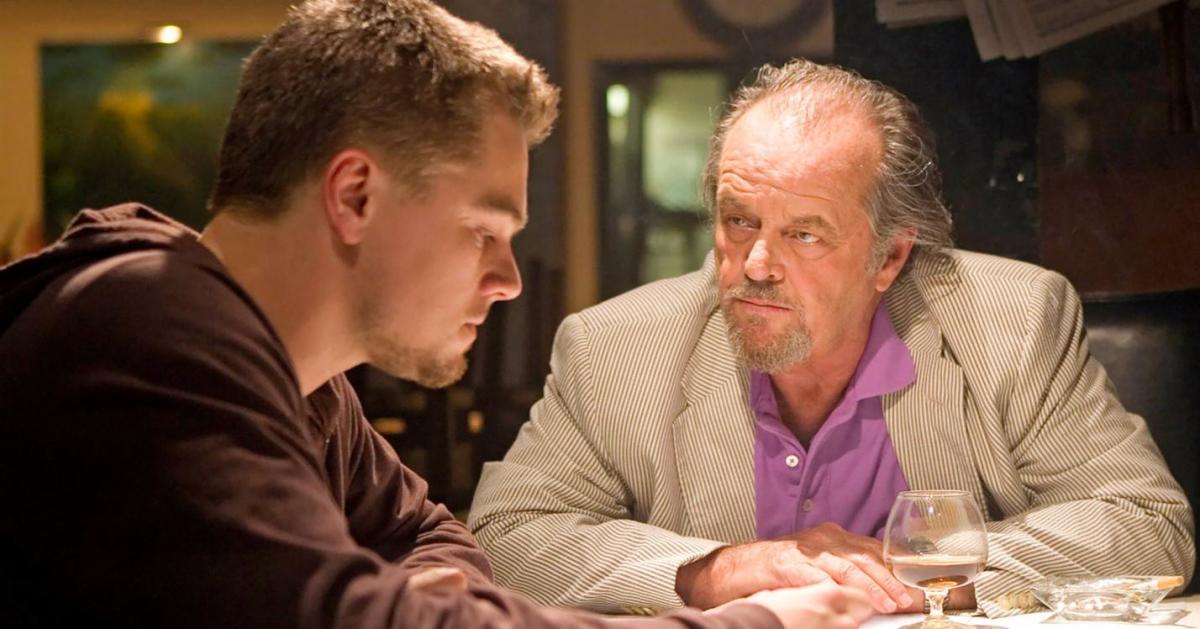
Apologies for being the 900th person to make this point, but: The Departed is not Martin Scorsese at his best. I wish I had a bolder take, but it’s true. That being said, The Departed is still better than 95 percent of every movie ever made, but it falls below Taxi Driver, Raging Bull, Goodfellas, Silence, Cape Fear, The Wolf of Wall Street, Casino… you get the idea… in Scorsese’s phenomenal filmography. (A quick aside: I will never forget seeing The Departed in the theater and hearing people laugh with giddy delight at the quick succession of the deaths in the film’s final minutes — and then hearing those same people groan when the indefensible rat scurries across the screen. It’s a good movie theater movie.) The Departed comes close to matching the cocaine-energy excellence of his finest work (there’s not one, but two Rolling Stones songs on the soundtrack), and it’s obvious that everyone (especially Jack Nicholson and Mark Wahlberg) is having a great time, but it never quite gets there. It’s middle-tier Marty.
Four out of five stars!
29. Annie Hall
Annie Hall is a funny and influential (for its story-telling techniques and how thousands of New Yorkers have modeled themselves after Allen’s Alvy Singer and Diane Keaton’s Annie Hall) comedy with sly observations about romance, religion, and killing spiders. But even if you believe in separating the art from the artist, that’s still hard to do here, knowing what we know now. The art (Alvy) is barely different from the artist (Woody). I still think Annie Hall belongs on this list, but if we erase it from human history and pretend Best Picture in 1978 went to Star Wars, I’d be fine with that, too. Nothing toxic about Star Wars!
28. Kramer vs. Kramer
Dustin Hoffman is in a lot of good to great movies, but he’s rarely the reason why I think they’re good to great. He strikes me as an actor who’s always uppercase ACTING, someone who’s unable to fully transform into a character. It frequently takes me out of the movie. So I was pleasantly surprised by Hoffman’s performance in Kramer vs. Kramer. He plays a recognizable human being, not a collection of distracting tics.
Hoffman and co-star Meryl Streep won Oscars for playing a workaholic ad man and a stay-at-home mother, respectively, who get divorced. Both characters have their faults, but you feel sympathy for them. Streep is absent for much of the movie (she returns late and is predictably superb), so it’s on Hoffman and Justin Henry, as the couple’s young son, to carry the emotional weight. They more than meet the challenge — Henry gives one of the best kid performances I’ve ever seen. The only sour note in Kramer vs. Kramer is the final scene. It rings false when the rest of the movie is laudably honest.
27. The Deer Hunter
There are the obvious Hall of Famers in baseball, like Ken Griffey Jr. and Mike Piazza. Then there are the guys who linger on the ballot for years: some of whom will receive a plaque in Cooperstown on their seventh attempt, others who will be relegated to “great, but not great enough” status. Let’s call them Outsiders. The Godfather, Alien, and Chinatown, all from the 1970s, are first-ballot Hall of Famers, if not Best Picture winners. 1978’s The Deer Hunter is an Outsider. It has the cast (De Niro! Streep! Walken! Cazale!), the impressive scale (the film takes place in a steel mill town in Pennsylvania and the jungles and back alleys of Vietnam), and the iconic scene (the Russian Roulette showdown) of a Hall of Famer, but there are a few flaws. Among the long stretches of harrowing brilliance, the script occasionally meanders and the sluggish third act (everything after De Niro returns home) is a step down from the first two. The Deer Hunter is still a damn fine film about broken masculinity. But it’s not a Hall of Famer.
26. The Sting
The Sting is a classic of “guys being dudes” cinema. It stars two handsome fellas, Robert Redford (the most handsome fella?) and Paul Newman, who combine their grifting talents to scam a mob boss, played by Robert Shaw. There’s no deeper meaning to The Sting, which makes it one of the least impactful Best Picture winners, but also one of the most fun. It’s got dames! Double crosses! Good hats! Jaunty rags! Is The Sting better than The Exorcist, which was also nominated for Best Picture in the year between The Godfather and The Godfather Part II? No, but I can’t be mad at fake-drunk Paul Newman.
INTERMISSION
We’ll get to the best of the Best soon, but what about the worst of the Best? There are, unfortunately, a lot of options for the worst Best Picture winner: The Broadway Melody (1929) is a whole lot of nothing; Hamlet (1948) is a snooze; Cimarron (1931) is offensively bad, and just plain offensive; A Beautiful Mind (2001) is saccharine mush; and Tom Jones (1963) makes The Benny Hill Show look like a comedy masterpiece. But none of those are my pick for the worst Best Picture winner. If you guessed Green Book, you’re close. It’s the other movie about a person of one race driving for a person of another race.
Driving Miss Daisy wants to be charming with its homespun wisdom about race. But it’s as boring and bland as the potatoes at Old Country Buffet, where someone like Miss Daisy, a vile woman who only learns to stop blaming Black people for all of life’s problems after her synagogue is burned down, is often yelling at “the help.” Crash, another famous Best Picture stinker, might have a clunkier, more ham-fisted take on racism, but at least it’s unintentionally hilarious. I’ll take Sandra Bullock falling down the stairs and not being racist anymore over an old Southern white lady yelling at her Black driver any day.
25. Ben-Hur
Ben-Hur — the most expensive movie ever made at the time — has an awesome intermission break. After being sentenced to slavery in the galleys for a crime he didn’t commit, Judah Ben-Hur (played by Charlton Heston, all gritted teeth and sweat) becomes a renowned chariot driver and returns home years later to Judea, where he discovers something terrible has happened in his absence. The final shot before the break is Ben-Hur seething with rage; he doesn’t say a word, but with a twitch of his face, it’s obvious that he’s already plotting his revenge against another character (I will not spoil the 62-year-old movie based on a 141-year-old book based on the oldest story in the world). It’s maybe not the best scene in Ben-Hur (the chariot race that would inspire the podrace sequence in The Phantom Menace is incredible), but it’s a charge of adrenaline in a nearly four-hour movie and the one that has stuck with me the most. If only we had cell phones back then. I would love to see an Avengers: Endgame-style video of a 1950s audience reacting to the screen fading to black before the 15-minute intermission. Anarchy.
24. The Lord of the Rings: The Return of the King
The “correct” way to experience The Return of the King is to watch The Fellowship of the Ring and The Two Towers before it. I did not do this for this project. I went straight to the third movie in The Lord of the Rings series, partially because I’ve seen the other two many times before, but mostly because I wanted to watch the trilogy-capper as an individual film. I’m sure there was an Academy member who did the same thing. I don’t envy them: The Return of the King is the weakest of the three movies with its 7,000 lethargic endings and lack of Saruman, but it’s still a damn good blockbuster. Peter Jackson (the most unlikely auteur considering his splatter-horror roots?) is a master at finding character moments in massive action scenes, while Elijah Wood and Sean Astin have the kind of heartfelt chemistry you don’t often see in movies of this scale. If you don’t get chills during the beacons of Gondor sequence, I’m sorry, but you’re a robot.
Endings are hard (as we learned from the television show most indebted to J.R.R. Tolkien), but The Return of the King is a rousing conclusion to arguably the best movie trilogy. At least until future Best Picture winner Paddington 3 comes out.
23. All About Eve
A movie is lucky to have one line that people still quote years after it was released. Nearly every acidic line in All About Eve is quotable. “Fasten your seatbelts, it’s going to be a bumpy night” is the most famous, but there’s also, “Nice speech, Eve. But I wouldn’t worry too much about your heart. You can always put that award where your heart ought to be” (a devastating burn) and “So many people know me. I wish I did. I wish someone would tell me about me.” Joseph L. Mankiewicz’s razor-sharp script (MANK) can be too proud of itself at times, but Bette Davis and Anne Baxter sell the heck out of it.
22. Terms of Endearment
You will cry while watching Terms of Endearment.
I can’t predict the scene or the line that will trigger your tears, but I guarantee will happen. It’s just science. For me, it happened when daughter Emma (Debra Winger, who gives a warm and vibrant Oscar-nominated performance) tells mother Aurora (Shirley MacLaine), “That’s the first time I stopped hugging first. I like that.” It was the first of many times I cried while watching Terms of Endearment, but even though it has a reputation as THE weepy cancer movie, the cancer plot doesn’t enter the picture until the final 30 minutes.
The rest of the film is a fine balance between comedy and drama about Emma moving from Texas to Iowa and later Nebraska with her mediocre husband named, ugh, Flap (Jeff Daniels); mother Aurora exploring her sexual identity with a horny astronaut (Jack Nicholson); and their strained-but-committed relationship. Terms of Endearment is a funny tearjerker, and there are simply not enough of those. It also has butterfly-effect significance: Polly Platt, the film’s production designer (and all-around icon), introduced writer and director James L. Brooks to Matt Groening, eventually leading to the creation of The Simpsons. Thank you, Polly. And thank you, horny astronaut Jack Nicholson.
21. All Quiet on the Western Front
Of the 92 movies to win Best Picture, 16 can be classified as “war movies.” This does not include emotional warfare (sorry, Kramer vs. Kramer), but actual combat war, beginning with the first Best Picture winner (Wings) and most recently with The Hurt Locker. Based on the book of the same name that you begrudgingly read in high school, 1930’s All Quiet on the Western Front is notable for being an anti-war movie, coming out so soon after the end of World War I. It’s an ugly, harrowing journey following a group of patriotic German schoolboys whose enthusiasm for enlisting vanishes when they see what war is actually like. “I can’t tell you anything you don’t know,” one of the soldiers tells a group of future-recruits upon returning to his old school on furlough. “We live in the trenches out there, we fight, we try not to be killed; and sometimes we are. That’s all.”
20. The Hurt Locker
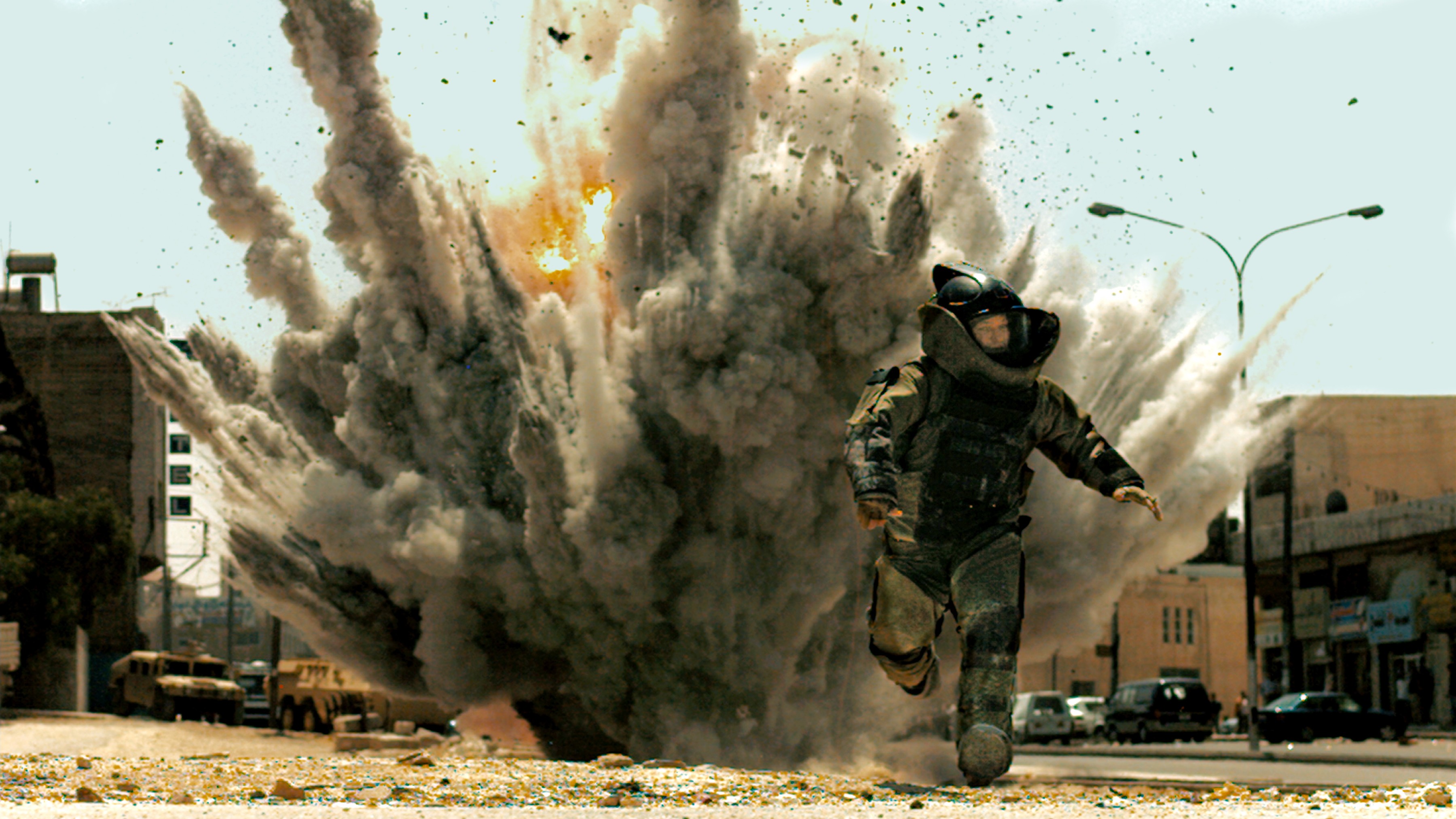
It was a big deal at the time that The Hurt Locker was named Best Picture over Avatar. Ex-wife Katheryn Bigelow vs. ex-husband James Cameron. The indie vs. the highest-grossing movie of all-time. The Iraq War vs. whatever the war in Avatar was called (this one may not have been as heated as the other two). But in the decade since, it’s becoming increasingly common for the underdog to triumph over the box office behemoth — look at 12 Years a Slave ($56.7 million in the United States) beating Gravity ($274 million). And in the case of The Hurt Locker, it was well deserved.
I like Avatar, which has become an oddly controversial opinion, but The Hurt Locker is a much better film. There’s a reason Jeremy Renner became a star: he’s fantastic as Sergeant First Class William James, a “wild man” bomb technician whose arrogance is matched only by his talent. Renner was nominated for an Academy Award for his adrenaline junkie performance, while his future-Marvel Cinematic Universe co-star, Anthony Mackie, should have been, too. But the war film’s true MVP is Bigelow, who makes it feel like you’re on the ground with the soldiers (the sniper sequence is an incredible showcase of tension and patience). Bigelow is Hollywood’s most skilled chronicler of fractured male ego and remains the only woman to win the Oscar for Best Director.
19. Platoon
It’s not often I get to talk about Keith David, so I’d like to take this opportunity to do so. Keith David rules. He’s an actor who can do a little bit of everything — comedies, dramas, action movies, voice-over roles, musicals — and I’m never disappointed to see him. He’s a consummate pro who makes everything he’s in better, no matter how big or small the role. Platoon is only his second credited film performance, after John Carpenter’s The Thing, and he plays the war film’s good-hearted, joke-cracking conscience, King. “All you got to do is make it out of here and it’s all gravy. Every day, the rest of your life, gravy,” he tells Charlie Sheen’s Chris Taylor. It’s how Keith David lives his actual life. When asked in 2019 about his 40 years in the industry, including parts in They Live, There’s Something About Mary, Coraline, Community, Rick and Morty, and The Princess and the Frog (the list is endless), David replied, “One thing, which I still hold today: I wanted to work. My goal was to be a working actor.” He’s one of the best.
18. Titanic
Titanic is melodramatic, too long, and riddled with cliches. I love it. It’s the Best Picture winner that I’ve seen the most (although never in the theater) and every time I do, I’m impressed all over again by Leonardo DiCaprio’s world-conquering charm; Kate Winslet’s tenacity; Billy Zane’s wig; the band playing on; the flawless build to the inevitable climax; Celine Dion’s karaoke classic; James Cameron’s unique ability to combine state-of-the-art technology with old-school Hollywood melodrama. (Cameron once said that his Avatar sequels will make you “sh*t yourself with your mouth wide open.” I believe him.) Even the clunky dialogue is effective. It’s two films in one — a teenage romance and a disaster movie — cannily seamed together.
Titanic dominated the box office in a way few films ever have or ever well. It was also a force at the Oscars, with 14 nominations (tied with All About Eve for the most all-time) and 11 wins (also tied with Ben-Hur for the most ever). It’s an enduring triumph. I might watch it again tonight.
17. 12 Years a Slave
I’m of the belief that the criminally underseen Widows is Steve McQueen’s masterpiece, but 12 Years a Slave is a strong runner-up. (Lovers Rock is in third place, even at the risk of resurrecting the Show vs. Movie debate.) Chiwetel Ejiofor plays Solomon Northup, a free Black man living in New York during the 1800s who’s kidnapped by con men and sold into slavery. He spends the next decade-plus of his life on plantations in the south, picking cotton for and getting whipped by the white man, with only the hope that he’ll one day be reunited with his family keeping him going. It’s a harrowing film full of stunning imagery and skillful performances, and McQueen deserves endless credit for his refusal to emotionally manipulate viewers; he prefers brutal truths. 12 Years a Slave is great, and I never want to see it again.
16. Rocky
Rocky is fantastic myth-making. The name “Rocky” floats across the screen as triumphant horns blare before we even see the man himself. But once we do, all sweaty and shirtless and ripped, it’s hard to look away. Sylvester Stallone, as both the star and sole credited screenwriter, knew exactly what he was doing: the iconic score, the mumbled philosophy from a sentimental beefcake, the Italian Stallion robe (branding!) — he quickly established Rocky as one of cinema’s most cherished underdogs, making the conclusion of his climactic showdown against Apollo Creed all the more unexpected. Stallone was building an unlikely franchise before anyone else realized it. Seven sequels of various quality later (Creed rules), Rocky is still going the distance.
15. Marty
Marty (Ernest Borgnine) is a nice guy. Not a “nice guy” in the contemporary pejorative sense, but an actual nice guy. He lives with his mom in the Bronx; he works hard at the butcher shop, and he wants to settle down with a nice lady, but he’s stopped trying after being turned down one too many times. To assuage his mother, however, he gives it another shot at the local dancehall, where he meets Clara (Betsy Blair). She’s also faced her fair share of rejection. Marty and Clara are a good pair, even if his mother doesn’t like her. But Marty doesn’t care. “She’s a dog and I’m a fat, ugly man,” he says in the film’s defining monologue. “Well, all I know is I had a good time last night! I’m gonna have a good time tonight! If we have enough good times together, I’m gonna get down on my knees and I’m gonna beg that girl to marry me!” Paddy Chayefsky, who wrote the screenplay, called it the “most ordinary love story in the world,” but there’s nothing ordinary about how good Marty is.
14. It Happened One Night
Frank Capra’s It Happened One Night is one of only three films to sweep the Big Five categories at the Oscars: Best Picture, Best Director, Best Actor, Best Actress, and Best Adapted Screenplay. (The other two are One Flew Over the Cuckoo’s Nest and The Silence of the Lambs.) It’s an impressive feat, but It Happened One Night’s influence is an even more impressive achievement. It’s the prototype for every romantic comedy ever, but no romantic comedy has come close to equalling Peter’s monologue about finding a girl who makes him truly happy. It Happened One Night has been making people truly happy for nearly 90 years.
13. The Best Years of Our Lives
The Best Years of Our Lives is the Best Picture winner that most pleasantly surprised me. I watched the movies on this list in chronological order, so by the time I got to the mid-1940s, I was getting sick of movies about war. There are a lot of them! Too many, I would argue. But The Best Years of Our Lives is not your typical war movie. It’s more empathic and human than most, and thoughtful in a way few films in any genre are. It follows a trio of servicemen returning to the United States: an Air Force captain who’s skilled at dropping bombs but little else; an infantryman with a loving and patient family; and a Navy officer who lost his hands during the war. The boozy joy they feel after returning to civilian life is quickly replaced by worry over everyday issues that may seem trivial compared to fighting literal Nazis, but that doesn’t make them any less important. The Best Years of Our Lives is an intimate movie about that struggle, to not let feelings of hopelessness define you. After all, every year could be the best year of your life.
Except last year… and this year.
12. Lawrence of Arabia
Lawrence of Arabia was never a movie I wanted to watch. It was a movie I felt like I had to watch. A four-hour assignment, a chore to cross off a list. (I remember seeing the bulging VHS set at the library when I was a pre-teen and being like, “Can we borrow Meatballs again?”) But technically, I was right: I had to watch it for this Best Picture assignment. And I’m glad I did. Turns out this popular and beloved film is very good.
Peter O’Toole (the actor with the most nominations but no wins in Oscar history) plays Lawrence, a blue-eyed anomalous lieutenant in the British army who is sent to the desert to find Prince Faisal (Alec Guinness) and investigate the progress of the Arab revolt against the Turks during World War I. There’s a lot happening there (I didn’t even include the part about Lawrence being a low-key sadist), but Lawrence of Arabia is a uniquely impressive epic in the way it syncs potentially cumbersome politics with crowd-pleasing spectacle. The train attack sequence, the trek across the desert, the well scene (Omar Sharif, as Sherif Ali, is the movie’s secret MVP) are monumental achievements that still look incredible decades later. I don’t know how director David Lean and his cinematographers did it, but I’m glad they did (I also don’t know how Lawrence of Arabia works even with all the white savior tropes).
I had over 30 years to see Lawrence of Arabia on the big screen, but waited until quarantine to watch it for the first time on my TV. Don’t make the same mistake that I did.
11. The French Connection
The day I watched The French Connection, my dad, without knowing what I was about to put on, sent me a tweet calling Gene Hackman the greatest actor of all-time. My instinctive reaction was to counter with someone else, someone more contemporary (Michael Shannon >>> everyone else), but after finishing my French Connection re-watch, I must admit: parents do (occasionally) understand.
Hackman’s character, Popeye Doyle, is a racist, alcoholic police officer who — get this — plays by his own rules. He’s also a cop killer, so maybe he’s the original ACAB? Whatever the case, Doyle is one of the least sympathetic main characters in a Best Picture winner (remember, this was a time before every other cable network series was about a white anti-hero). He’s driven by rage and obsession and will do anything to anyone to get his way. You’re not rooting for him, but thanks to Hackman’s volatile performance, you also can’t look away from the rotten depths he’ll sink to. (The film’s original tagline was: “Doyle is bad news. But he’s a good cop.” I’d argue it’s the other way around. Doyle is a good cop because he’s bad news, which, unfortunately, says more about the oppressive police department than it does about one police officer.)
Popeye is a dirty cop in a relentlessly-paced movie full of beatdowns, car chases, and grim truths about a corrupt system full of broken people. It’s beautiful in an ugly sort of way.
10. The Bridge on the River Kwai
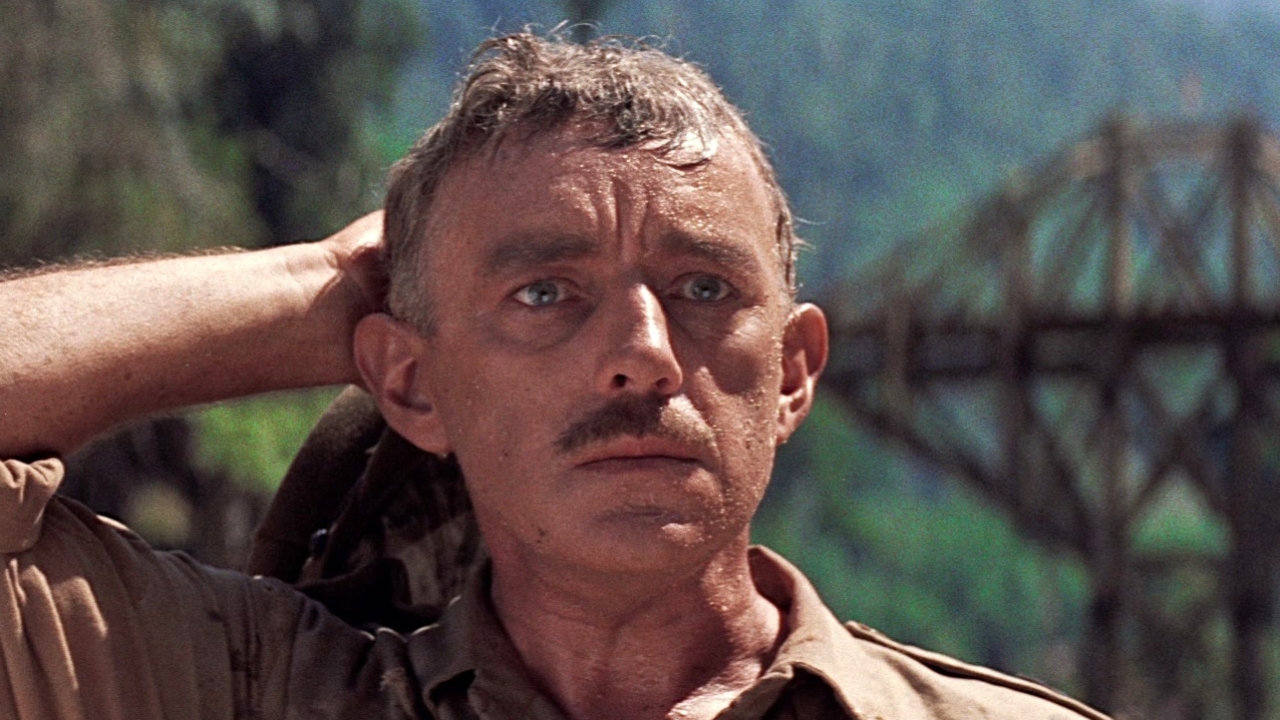
“That ruled” is not my reaction to many Best Picture winners. I did not leave The Artist thinking “that kicked ass.” But The Bridge on the River Kwai rules and kicks ass.
David Lean’s 1957 epic (an overused word that absolutely applies here) is about a group of British POWs who are instructed to build a railway bridge across the river Kwai for their Japanese captors in Burma, but it’s also about loyalty, treason, revenge, and a catchy marching song. Two decades before his most famous role (much to his dismay), Alec Guinness plays a stubborn colonel who refuses no less than excellence from his men, even if it means assisting the enemy. William Holden, as an escaped prisoner who’s forced to return to where he dug graves for his own men, and Sessue Hayakawa, as the Japanese camp commandant who preaches to “be happy in your work,” are equally excellent. Everyone is excellent in The Bridge on the River Kwai, a big, sweaty movie full of explosions and quips (“I suppose if I were you… I’d have to kill myself. Cheers!”) with an ending that puts most action movies to shame. “What have I done?”
9. Parasite
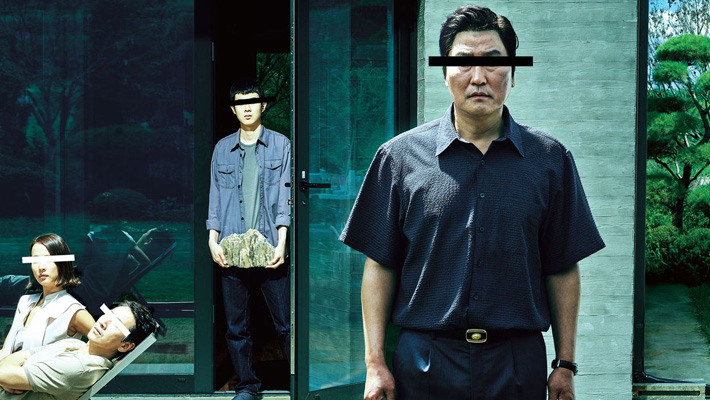
Maybe it’s recency bias. Maybe I’m still coming down from the #BongHive high (#BongHigh?). But I think Bong Joon-ho’s Parasite is one for the ages — and I think I’ll still think that in 10 years, 20 years, 50 years. The first foreign-language film to win Best Picture hops between genres with ease. It’s a twisty psychological thriller; it’s a horror movie with moments of shocking violence; it’s a family drama; it’s a dark comedy about wealth. It’s all four at once. There’s so much happening in every scene, every line of dialogue, but it’s never overwhelming. It’s wildly entertaining with a message that transcends languages: eat the rich (or at least eat their ram-don).
8. Casablanca
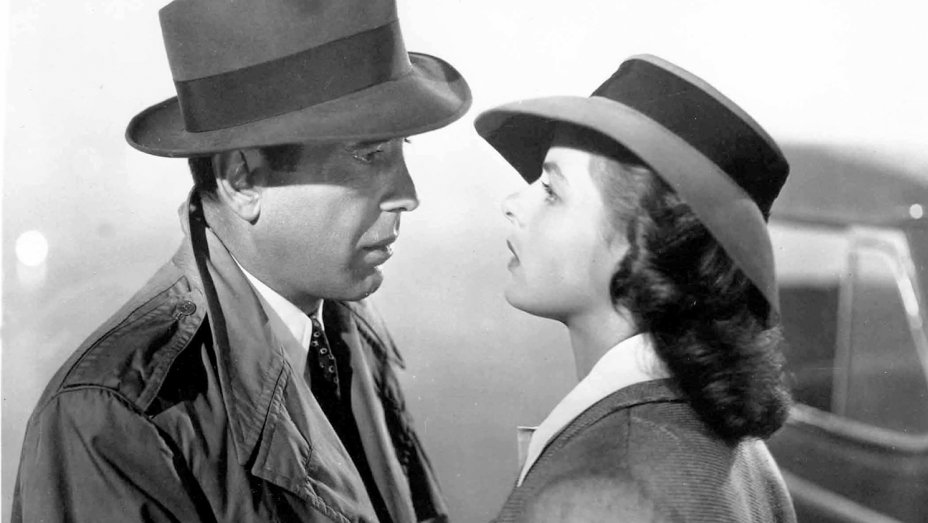
It’s annoying when people say “you have to watch [fill-in-the-blank movie].” It’s even more annoying when those people are right. Casablanca is deserving of its masterpiece label. Humphrey Bogart and Ingrid Bergman are impossibly cool (even if Bogart’s Rick being politically and ideologically neutral as the Nazis take over the world isn’t… great). “As Time Goes By” is lovely. Peter Lorre and Sydney Greenstreet are the most distinctive-looking character actors of the 1940s — and maybe ever. Even the behind-the-scenes story is fascinating. You have to watch Casablanca.
7. Schindler’s List
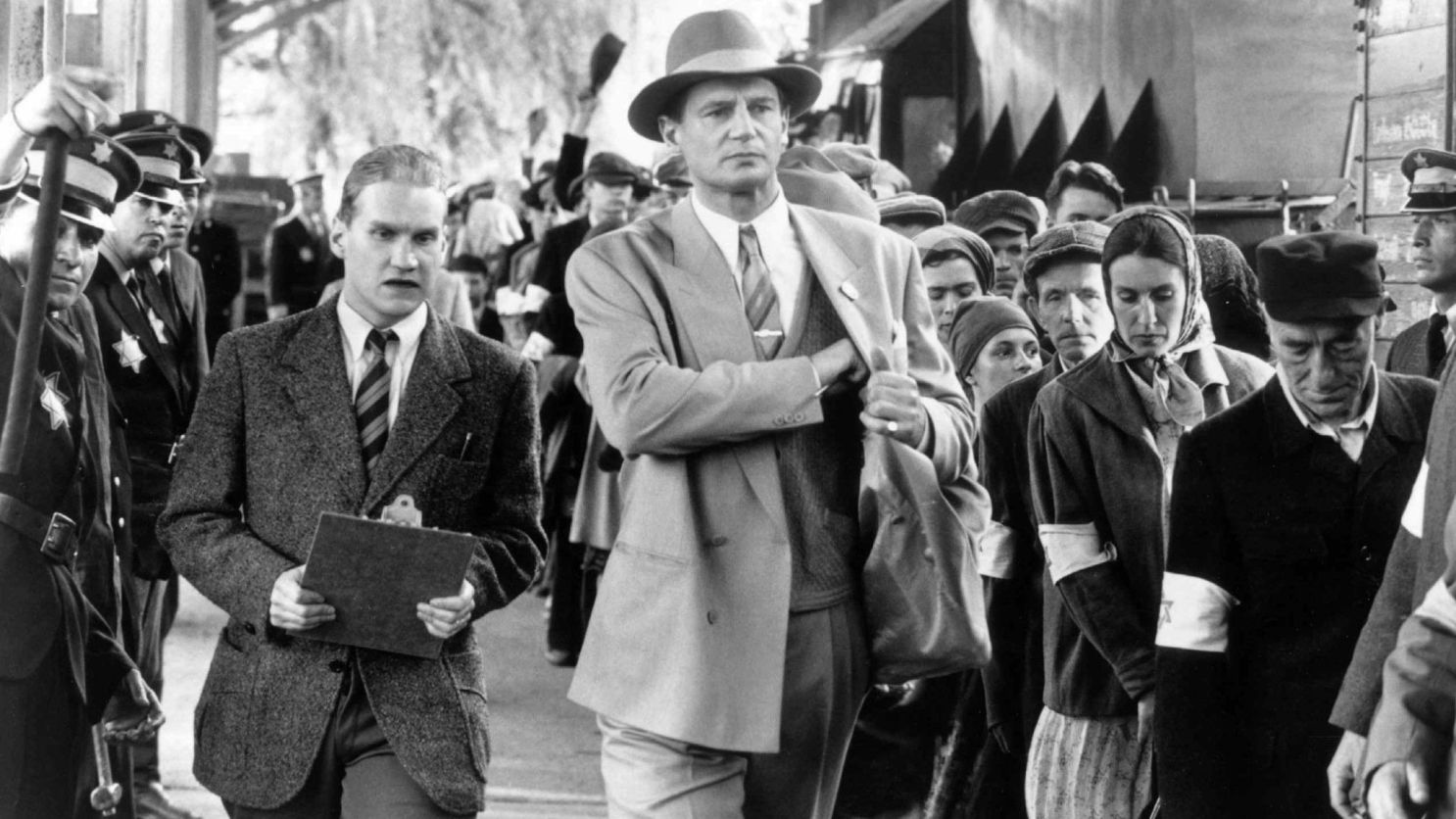
No director will ever have a better year than Steven Spielberg did in 1993. In June, Jurassic Park began its march towards briefly becoming the highest-grossing movie ever. Six months later, Schindler’s List was released to rapturous reviews and an eventual Best Picture win. Spielberg was already Hollywood’s most commercially successful director, but the black-and-white Holocaust drama assured his status as a “serious cinematic artist,” too, as the New York Times put it at the time. Schindler’s List is a tough viewing, but it’s not misery porn — Spielberg is too canny to wallow in suffering, and he and screenwriter Steven Zaillian wisely center the story on Oskar Schindler, a German industrialist who saved the lives of over 1,000 Jews, instead of attempting to cover the entire Holocaust. Spielberg never topped his 1993 (how could he?), but he had many more triumphs to come, including six more Best Picture nominees.
6. The Silence of the Lambs
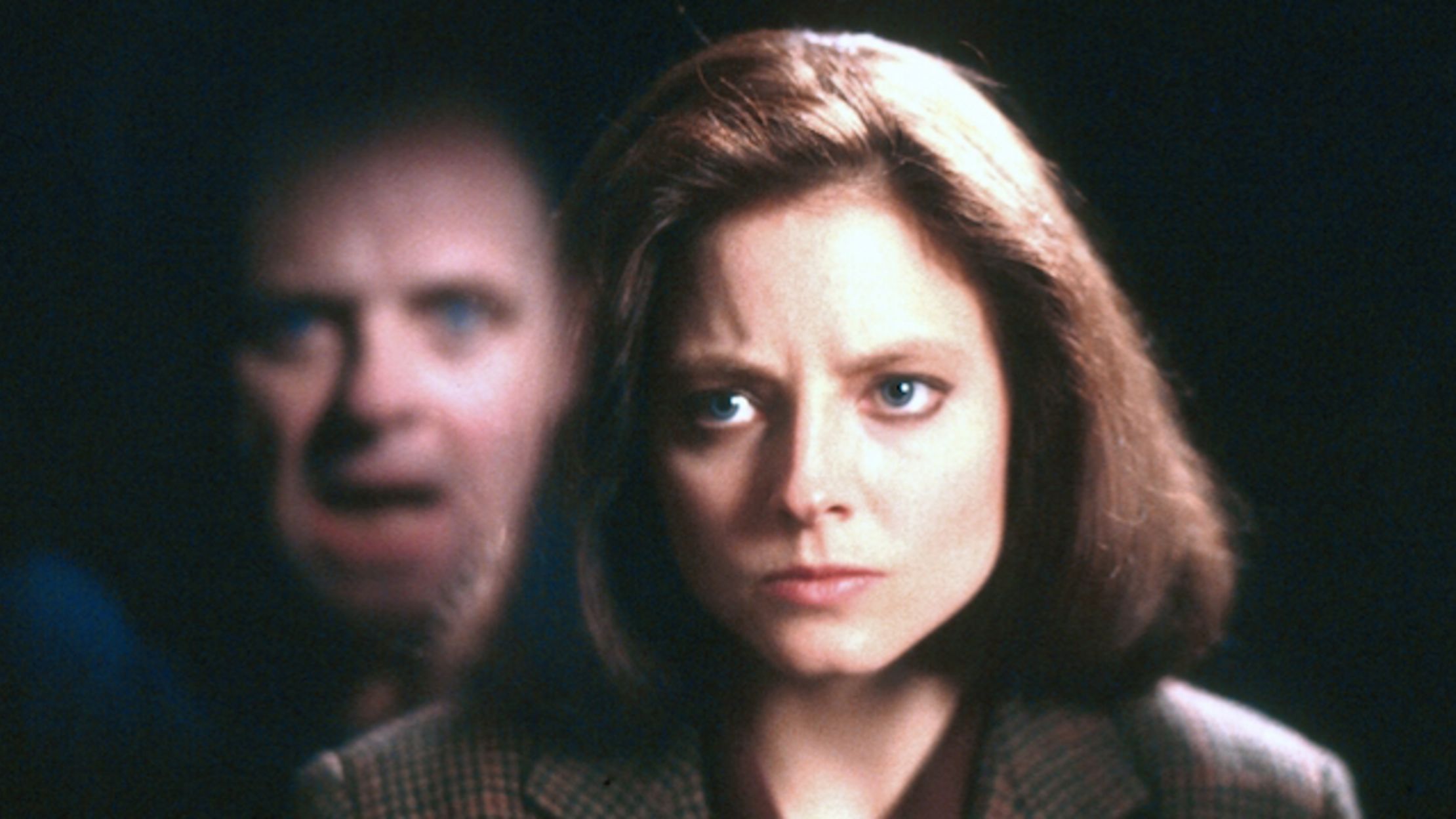
As a kid, I spent countless hours at my local video store, looking at all the new movies I could have watched before renting Ace Ventura: When Nature Calls for the 23rd time. I usually avoided the horror section because I was scared of Pinhead (Butterball and I are good now), but there was one VHS box cover that always grabbed my attention: The Silence of the Lambs. The moth over the ghost-faced woman’s mouth creeped me out; even the title was weird and mysterious. I built a mythology in my mind about what the movie was about before hearing the name “Dr. Hannibal Lecter” and didn’t see it until I was in college. It couldn’t possibly live up to my internalized hype, right? Wrong.
The Silence of the Lambs is great. It’s also crazy that it won Best Picture (the only horror movie to ever do so). It’s an airport thriller about an FBI agent interviewing a notorious cannibal to get details on a serial killer nicknamed “Buffalo Bill” who skins women. And it beat Beauty and the Beast, Bugsy, JFK, and The Prince of Tides, the most Oscar movie to ever Oscar! Anthony Hopkins is captivating as Hannibal (we don’t talk enough about how sassy his zingers are) and Jodie Foster is nearly as good as Clarice Starling. But The Silence of the Lambs works as both a pulpy cable mainstay and an Oscar-winning classic because of Jonathan Demme’s lurid-yet-compassionate filmmaking. That contrast is there on the box cover that haunted me as a kid: it’s horrifying, yet beautiful.
That being said, The Silence of the Lambs is no Ace Ventura 2.
5. No Country for Old Men
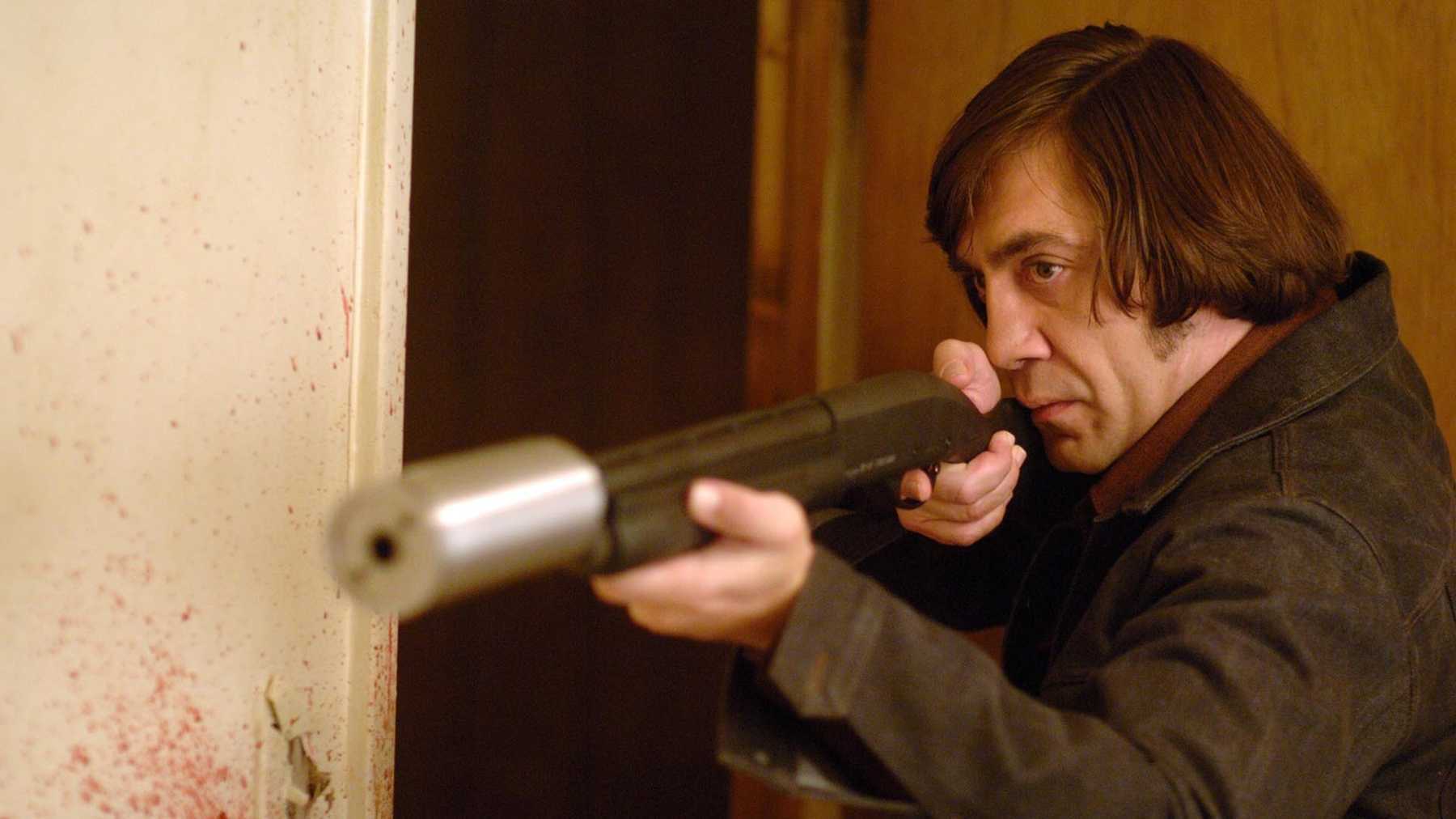
You know what’s harder than ranking Best Picture winners? Ranking Coen Brothers movies. I know Intolerable Cruelty and The Ladykillers are at the bottom (even if they’re not as bad as their reputation), but first place might as well be a six-way tie between Barton Fink, Inside Llewyn Davis, Fargo, Miller’s Crossing, A Serious Man, and No Country for Old Men.
I would not have ranked No Country so high after my first viewing in 2007, as I was firmly Team There Will Be Blood in one of the most impressive Best Picture classes in recent memory. But upon a rewatch, I realized how much I undersold the neo-Western crime thriller. It’s damn-near perfect.
No Country is everything Joel and Ethan Coen do well — bleak comedy, poetic violence, sublime casting (not only the stars, like Josh Brolin and Tommy Lee Jones, but also the weirdos around the fringes of the story, like the gas station employee and the trailer park clerk) — in a tight and tense two hours. This thing moves. Years of “friendo” memes haven’t minimized Javiar Bardem’s boogeyman performance as Anton Chigurh — he’s still a singularly terrifying character, drained of everything that makes him human other than the urge to kill. But he’s not in the movie’s chilling scene. That would be the one between Sheriff Bell (Lee Jones, sanctioning no buffoonery) and Ellis (Barry Corbin), who tells his nephew, “This country’s hard on people,” adding, “You can’t stop what’s coming. It ain’t all waiting on you. That’s vanity.” It’s a haunting reminder that as much as we like to think that we’re the protagonist in our own story, we’re not. We’re merely supporting characters in the much-larger story, which will continue long after we’re dead. Cheery stuff as usual from my favorite directors!
4. The Godfather / 3. The Godfather Part II
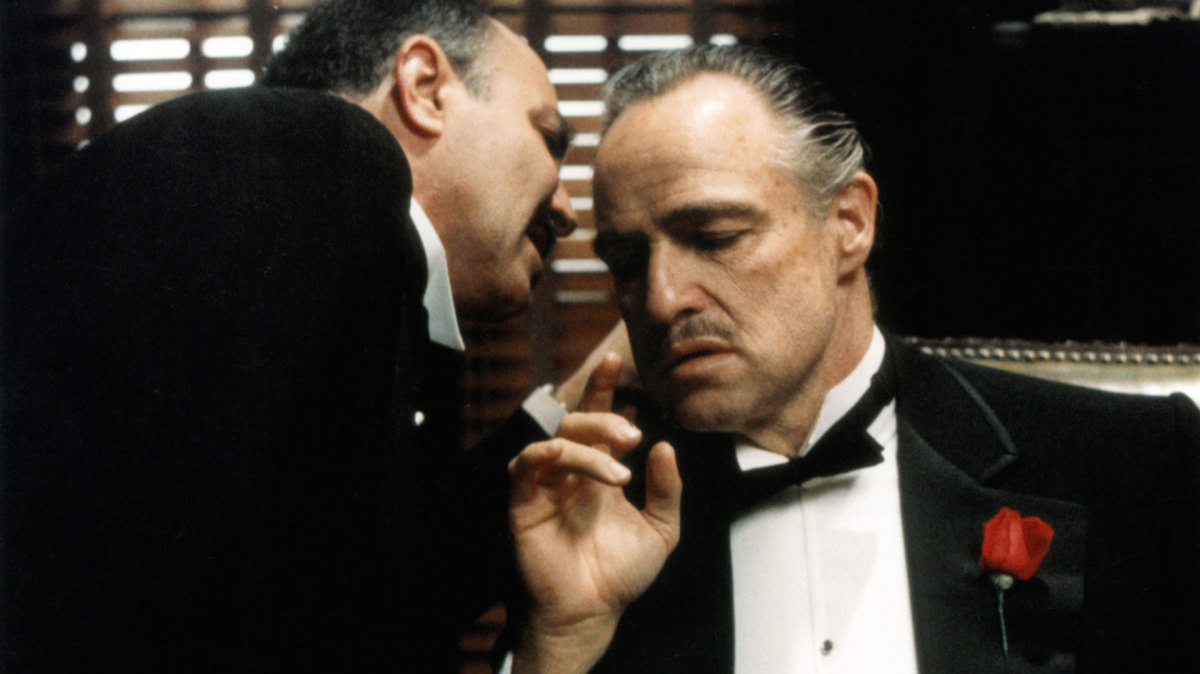
There’s a recurring bit on Scott Aukerman and Adam Scott’s U2-turned-REM-turned-Red Hot Chili Peppers (briefly)-turned-Talking Heads podcast where they do a podcast-within-a-podcast called “I Love Films.” Basically, it’s the two of them discussing the films — not movies or popcorn flicks, but films — that they love, “like The Godfather.” That’s the kind of cultural omnipresence that The Godfather has: it’s the definitive movie. And The Godfather Part II is the definitive “sequel that’s better than the original.”
I mean, what’s there even left to say about The Godfather and The Godfather Part II? Everything that could be said, has been said. Al Pacino: good. Diane Keaton: also good. Robert Duvall: my dude. Robert De Niro: hot. On my most recent viewing, I spent half the time matching the Corleones to their Roy counterparts from Succession before realizing Kendall is a Fredo who thinks he’s a Michael but wants to be a Sonny (he wishes he was a Shiv). This really opened up The Godfather and Succession for me.
2. Moonlight
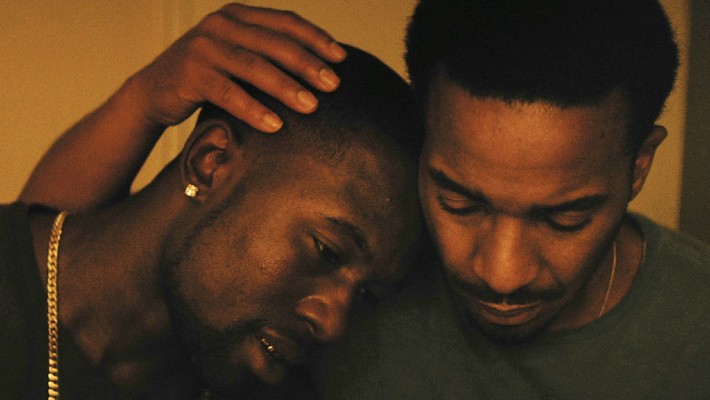
One of the joys of watching every Best Picture winner was seeing how much things have and haven’t changed through 11 decades of filmmaking. Well, the “have” is enjoyable. The “haven’t” is how The King’s Speech and Green Book happened. But imagine telling someone in 1956 that 60 years later, a movie about a gay Black man would win Best Picture. I would not want to hear their response, because, well, it was the 1950s, but I would love to see their reaction. It might look something like this.
Directed by Barry Jenkins, Moonlight follows Chiron through three stages of his life, as played by three different actors: when he’s a shy child (Alex Hibbert); a confused teenager (Ashton Sanders); and a hardened adult (Trevante Rhodes), who still harbors romantic feelings for his only childhood friend, Kevin (André Holland). There’s tragedy throughout, from Chiron’s unseen incarceration to the fate of his drug-dealing father surrogate (Oscar winner Mahershala Ali), but to call Moonlight a “tragedy” is inaccurate. It’s an unimaginably beautiful film (the word “poetic” comes to mind) about empathy and small acts of kindness, like offering to make a long-time friend the chef’s special, shot in warm blues by James Laxton with a ravishing score from Succession’s Nicholas Britell.
Moonlight is not only one of the best Best Picture winners ever — it’s the best movie of the 2010s, period.
1. The Apartment
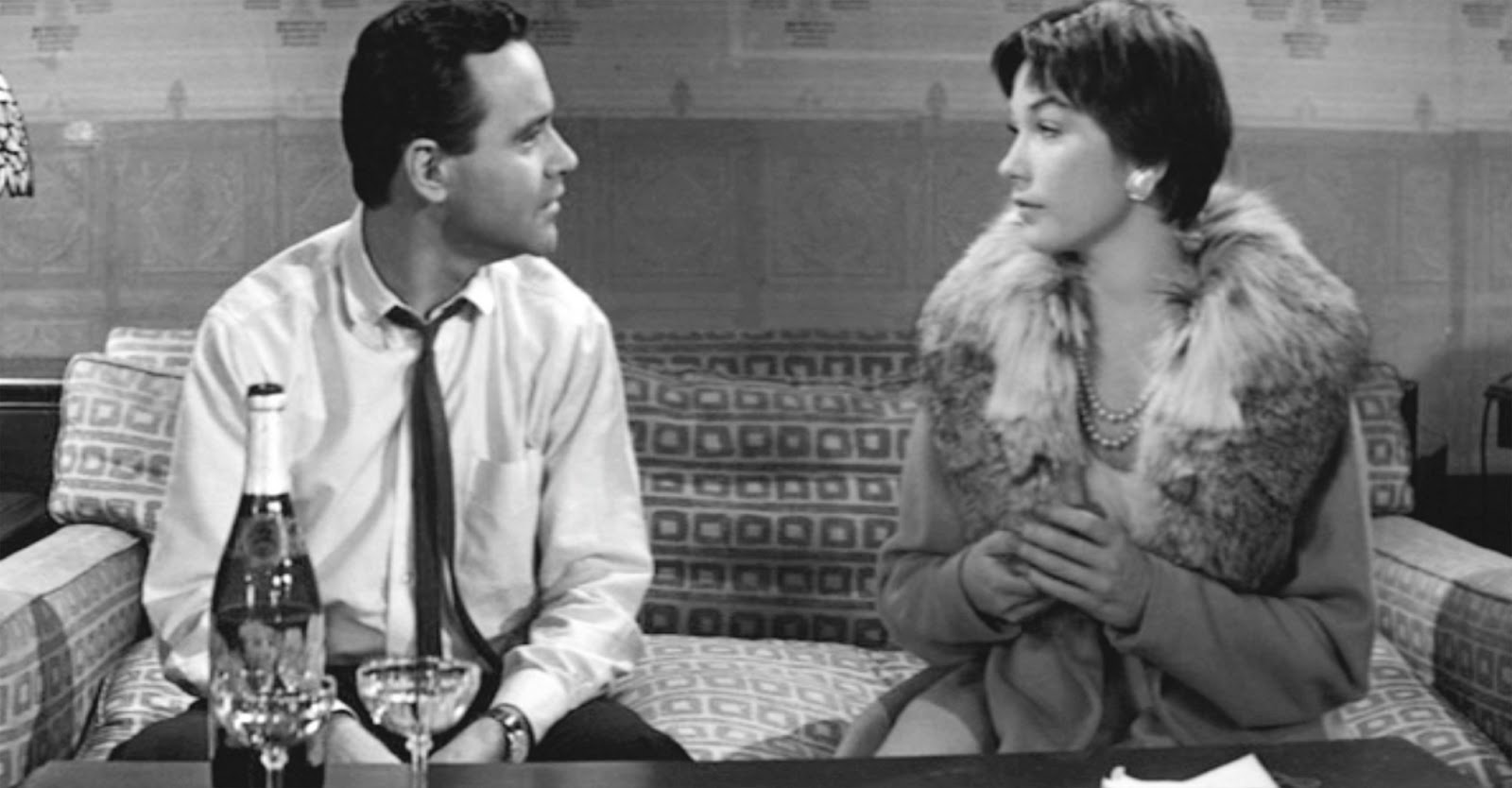
Bud (Jack Lemmon) lives a lonely but hopeful life. He stays late at work so his bosses can take their mistresses to his apartment in the hopes of getting a long-promised promotion. His greatest joy in life is his daily conversation with the office’s elevator operator, Fran (Shirley MacLaine), who he has a crush on. But she’s having an affair with Bud’s boss, Mr. Sheldare (Fred MacMurray). Bud and Fran have undeniable chemistry, but they’re kept apart by self-inflicted circumstances and because they both believe they’re undeserving of love.
Billy Wilder’s The Apartment is the type of movie that the Oscars tend to avoid, especially for Best Picture. It’s not about war, it’s not a musical, it doesn’t take place over multiple decades, and there’s no misunderstood genius or child prodigy. The Apartment is a remarkable movie about unremarkable people, full of delightful laughs and poignant sadness. “I like it that way,” Fran tells Bud about her broken mirror. “Makes me look the way I feel.” We respect a short-haired emo queen; we love a straining-spaghetti-with-a-racket king. As far as I’m concerned, The Apartment is a masterpiece, quality-wise and otherwise-wise.
